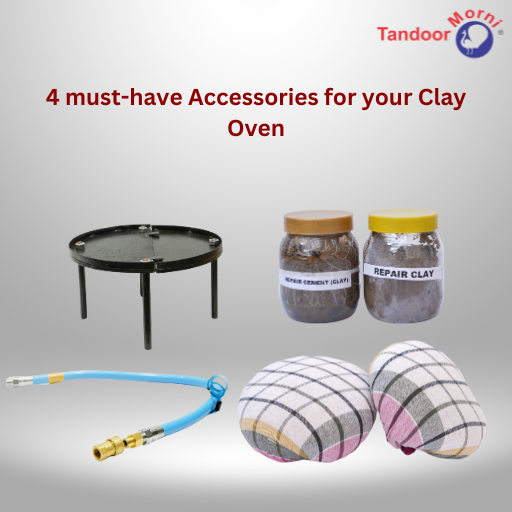
Essential Tandoor Accessories for Perfect Tandoori Cooking: Your Complete Guide
Tandoori cooking is all about great flavors, intense heat, and a touch of tradition. To fully enjoy this cooking style, you need more than just a tandoor oven. The right tandoor accessories can make the cooking process safer, easier, and more enjoyable. These tools will help you get the perfect char on meats, the fluffiest naan, and the tastiest kebabs, all while handling the high heat like a pro.
This guide highlights the must-have accessories to boost your tandoori cooking experience. Whether you’re connecting a gas oven, baking naan, or grilling kebabs, these tools will help you master the art of tandoori cooking.
Why Do Tandoor Accessories Matter?
Before jumping into the list of must-have accessories, it’s good to understand why they’re so important. Tandoor ovens can reach temperatures of over 500°F, much hotter than a regular kitchen stove. This high heat gives tandoori dishes their smoky taste and crispy texture, but it also means you need special tools to cook safely.
The right accessories help you handle the heat, cook efficiently, and get the best results. They make a big difference whether you’re making dinner for your family or hosting a party.
1. Flexible Gas Hose with Quick Disconnect – Connect Your Gas Tandoor Safely
If you use a gas-powered tandoor, a flexible gas hose with a quick disconnect is a must-have. This hose makes it easy to connect and disconnect the gas supply safely and quickly. The quick disconnect feature is especially helpful for portable tandoors or if you need to move the oven around.
The hose is designed to handle high temperatures and stays secure to prevent gas leaks. It also lets you position your tandoor in different spots, giving you more flexibility in your cooking area.
Why Use a Flexible Gas Hose with Quick Disconnect:
-
- Ensures a safe and secure gas connection.
-
- Makes it easy to set up your tandoor in different locations.
-
- Allows quick disconnection when the tandoor is not in use.
2. Naan Gaddi Cushion – The Essential Tool for Perfect Naan
Making naan bread in a tandoor oven calls for a special tool known as a naan gaddi cushion. This thick cotton cushion helps you safely stick the naan dough onto the hot inner walls of the tandoor. It acts as a barrier, protecting your hand from the intense heat while allowing you to press the dough onto the oven walls.
Using a naan gaddi cushion is the traditional way to make naan, and it’s key for getting the authentic taste and texture. It ensures the dough sticks properly and cooks evenly, giving the naan a crispy outside and soft inside.
Why Use a Naan Gaddi Cushion:
-
- Protects your hands from heat while placing naan in the tandoor.
-
- Helps the dough stick to the oven wall for even cooking.
-
- Ensures the perfect crispy outer layer and fluffy interior.
3. Tandoori Steel Skewers – Essential for Cooking Meats and Veggies
A set of high-quality steel skewers is a must for cooking various dishes in the tandoor. These skewers are strong enough to handle the high heat, making them ideal for grilling meats, seafood, and vegetables. Unlike wooden skewers, steel skewers can be reused many times, making them more eco-friendly.
Tandoor Morni offers different types of steel skewers, including round and square shapes, with thicknesses from 4mm to 8mm. Thinner skewers are great for lighter foods, while thicker ones work well for larger cuts of meat.
Types of Tandoori Steel Skewers and Their Uses:
-
- 4mm Skewers: Ideal for fish, paneer, or small vegetables.
-
- 6mm Skewers: Perfect for chicken, lamb, and other meats.
-
- 8mm Skewers: Best for large cuts of meat or whole chicken.
Benefits of Using Tandoori Steel Skewers:
-
- Distributes heat evenly for perfect cooking.
-
- Durable and easy to clean.
-
- Adds a delicious char to your food.
4. Naan Bread Rods – For Safely Removing Naan from the Tandoor
After using the naan gaddi cushion to place the naan in the tandoor, you’ll need tools to remove it safely once it’s cooked. These tools usually come as a set with a hook and a spade. The spade helps you slide under the naan, and the hook helps pull it off the oven wall without tearing it.
Using the right bread tools ensures your naan comes out perfectly every time, avoiding burns and making the process safer.
Benefits of Bread Tools:
-
- Makes it easy to safely remove naan from the tandoor.
-
- Helps keep the naan’s shape and texture.
-
- Reduces the risk of burns.
Additional Accessories to Watch For
Having the right accessories can greatly improve your tandoori cooking experience. Here are some more tools to consider:
5. Metal Plate – For Versatile Cooking Options
A metal plate adds versatility to your tandoori cooking by providing a flat surface for cooking flatbreads like roti, paratha, or even pizza. It can also be used as a griddle for sautéing vegetables or frying small items. It’s useful for getting even cooking and preventing smaller foods from falling into the tandoor.
Benefits of Using a Metal Plate:
-
- Offers a flat cooking surface for various dishes.
-
- Prevents smaller items from falling into the tandoor.
-
- Helps cook delicate foods evenly.
6. Tandoor Clay Balls – For Enhanced Heat Retention
Tandoor clay balls are placed at the base of the tandoor to improve heat retention. They absorb and distribute heat evenly, ensuring consistent cooking temperatures. These clay balls help you achieve the traditional smoky flavors and protect the tandoor’s clay lining from direct flame contact.
Why Use Tandoor Clay Balls:
-
- Improves heat retention and cooking efficiency.
-
- Distributes heat evenly for consistent results.
-
- Extends the life of the clay lining.
7. Tandoor Clay Pot Repair Kit – Keep Your Oven in Top Condition
Over time, the high heat can cause cracks in the clay lining of your tandoor. A repair kit contains the materials needed to fix small cracks, helping you maintain your oven’s performance without having to replace it. The kit usually includes special clay and tools for patching damaged areas.
Benefits of a Tandoor Clay Pot Repair Kit:
-
- Extends the life of your tandoor.
-
- Helps maintain even heat by keeping the clay intact.
-
- Offers a cost-effective way to avoid replacing the oven.
8. Tandoor Skewer Ring – For Better Skewer Management
The skewer ring fits over the mouth of the tandoor, allowing you to hold multiple skewers securely. It ensures the skewers are spaced evenly, which helps in cooking food uniformly. This accessory is especially handy for large gatherings or professional chefs who need to manage several skewers at once.
Why You Need a Tandoor Skewer Ring:
-
- Keeps skewers in place for even cooking.
-
- Makes it easier to handle multiple skewers at once.
-
- Prevents skewers from falling into the tandoor.
9. Tandoor Oven Lid – Control Your Cooking Temperature
A tandoor oven lid helps regulate the temperature inside the oven. It traps the heat, which is useful for slow-cooking meats, smoking dishes, or keeping a consistent temperature. Using a lid also conserves fuel by maintaining the heat more effectively.
Advantages of Using a Tandoor Oven Lid:
-
- Allows for precise temperature control.
-
- Keeps the heat steady for longer cooking times.
-
- Saves fuel by reducing heat loss.
10. Gas Tandoor Pilot Assembly – Flame Sensor
For gas-powered tandoors, a pilot assembly is essential. It includes a pilot burner, ignition switch, and a flame sensor to ensure the gas ignites safely. This accessory helps prevent gas leaks and other hazards, giving you peace of mind while cooking.
Benefits of a Gas Tandoor Pilot Assembly:
-
- Provides a safe and reliable ignition source.
-
- Improves safety by controlling gas flow during ignition.
-
- Reduces the risk of gas leaks.
11. Tandoor Thermocouple (Safety Mechanism) – For Safety
A thermocouple, also known as a flame sensor, is a safety feature for gas-powered tandoors. It doesn’t measure temperature but detects whether the flame is present. If the flame goes out, the thermocouple shuts off the gas supply to prevent leaks, ensuring safe operation.
Benefits of a Tandoor Thermocouple (Safety Mechanism):
-
- Detects flame presence to shut off gas if the flame goes out.
-
- Prevents gas leaks and potential accidents.
-
- Keeps the tandoor running safely, especially during long cooking sessions.
Get Your Tandoor Accessories Online
Now that you know about the essential tandoor accessories, it’s time to get equipped. Tandoor Morni has been a trusted name since 1992, offering a variety of high-quality accessories to make your tandoori cooking easier and safer. Whether you need a gas hose, skewers, or repair kits, we’ve got you covered.
Need Help? Order and Technical Support
Have questions or ready to place an order? Reach out to us via phone at +1(727) 251 6924 or email us at info@tandoormorni.com.
Need detailed instructions? Explore the Operation Manual for our CH & CS models to get started with your Tandoor oven today.
About Tandoor Morni
Tandoor Morni, in business since 1992, is a trusted name in premium Tandoori Clay Ovens, known for crafting high-quality traditional and commercial tandoors. With a commitment to excellence, Tandoor Morni offers a wide range of tandoors, including commercial, residential, catering, and copper models. Our tandoors are built with durable materials and designed for efficient heat distribution, ensuring authentic flavors and fast cooking. Each oven features customizable options like gas, wood fire, or charcoal compatibility, making them suitable for various cooking needs.
Common Queries – FAQ’S
Can I use a tandoor Indoors?
Yes, certain tandoor models are designed for residential use, including compact, home-friendly versions. However, using a tandoor indoors requires proper ventilation and adherence to safety precautions to manage high heat and potential smoke. Always consult the manufacturer’s guidelines to ensure safe indoor use. For best results, they are often used in well-ventilated spaces or outdoors.
Are Tandoor-Cooked Foods Healthy?
Yes, tandoor-cooked foods are often considered healthy because they typically require little to no oil. The high cooking temperatures allow the food to cook quickly, preserving nutrients while reducing the need for additional fats. Additionally, the vertical cooking method allows excess fats to drip away, resulting in leaner dishes.
What Types of Fuel Can Be Used in a Tandoor?
Tandoors can be heated using charcoal, wood, natural gas or propane. Charcoal and wood provide an authentic smoky flavor, while natural gas or propane is more convenient and easier to control. The choice of fuel often depends on the specific cooking requirements and local regulations, especially in commercial settings.
How Does a Tandoor Oven Differ from a Conventional Oven?
Unlike conventional ovens, which use electric or gas heat, a tandoor is made from clay and uses charcoal, wood, or gas to heat the walls. The cylindrical shape and porous clay walls create an environment where heat circulates evenly, cooking food quickly while adding a smoky flavor. Conventional ovens, in contrast, lack the intense heat and unique cooking technique of a tandoor.
How Much Maintenance Does a Gas Tandoor Require?
Gas Tandoor needs regular maintenance, though less than Charcoal Tandoor models. Here’s a breakdown:
- Daily Maintenance: Wipe down the inner chamber and clean the burner.
- Weekly Maintenance: Check the burner and gas line for any blockages or leaks.
- Monthly Maintenance: Deep clean the gas pipes, burners, and inner chamber.
- Quarterly Maintenance: Have a professional inspect the gas connections and burners.
- Annual Maintenance: Perform a full inspection and reapply clay lining if needed.
Avoid exposing the tandoor to excessive water, and gradually increase heat to prevent cracks.
How Can I Make a Payment for My Tandoor Order?
You can pay for your tandoor order through our website by placing an online order using the available payment options. If you prefer to place an order over the phone, we accept payment via Zelle for a quick and secure transaction.
Which Tandoor Oven Size Should I Choose?
- For Home Use: Consider the number of family members or guests you typically serve. A mini tandoor is ideal for smaller gatherings.( Suggested Product: R26 )
- For Restaurants: Measure the entrance to ensure the oven fits through the door. Select a size based on available space and cooking needs. (Suggested Product: CH02)
- For Naan Bread: Opt for an oven with a smaller mouth opening, resulting in a more egg-shaped clay pot, perfect for naan preparation. For larger meat portions, choose a bigger oven to maintain heat longer. (Suggested Product: CH04)
- For Catering: A Clay Tandoor Oven is suitable for catering due to its lightweight and easy transport features. (Suggested Product: CS01)
- For Banquet Halls: A larger oven with a spacious clay pot is ideal for preparing multiple dishes quickly during big events. (Suggested Product: CH06)
- For Open Kitchens or Outdoor Patios: Choose a model with a decorative finish, such as a copper tandoor, to enhance the kitchen’s appearance with a touch of elegance. (Visit Our Copper Tandoor).
What Should You Consider When Installing a Restaurant Clay Oven?
- When installing a tandoor in your restaurant kitchen, consider the following:
- Space and Placement: Ensure there is enough clearance around the tandoor for ventilation and safety, with fireproof or heat-resistant flooring.
- Ventilation and Exhaust: Proper ventilation is essential to handle heat and smoke, especially with charcoal tandoors.
- Safety Measures: Use heat-resistant barriers if the tandoor is near other equipment, and keep fire safety equipment like extinguishers handy.
- Fuel Supply: Decide between charcoal, which offers traditional flavors, and gas, which is easier to manage.
By keeping these points in mind, you can ensure a safe and efficient tandoor setup. If you're looking for a Restaurant Clay Oven for Sale, make sure to choose a model that fits your kitchen's requirements and meets all necessary safety standards.
- Menu Considerations: Larger tandoors or multiple units may be needed if you have a diverse menu or high demand during peak hours.
- Maintenance and Cleaning: Clean the tandoor daily and monitor for any wear or damage to the clay or gas parts.
- Compliance with Regulations: Ensure your installation meets local safety standards and health codes.
- Staff Training: Train staff in safe tandoor operation and fire safety protocols.


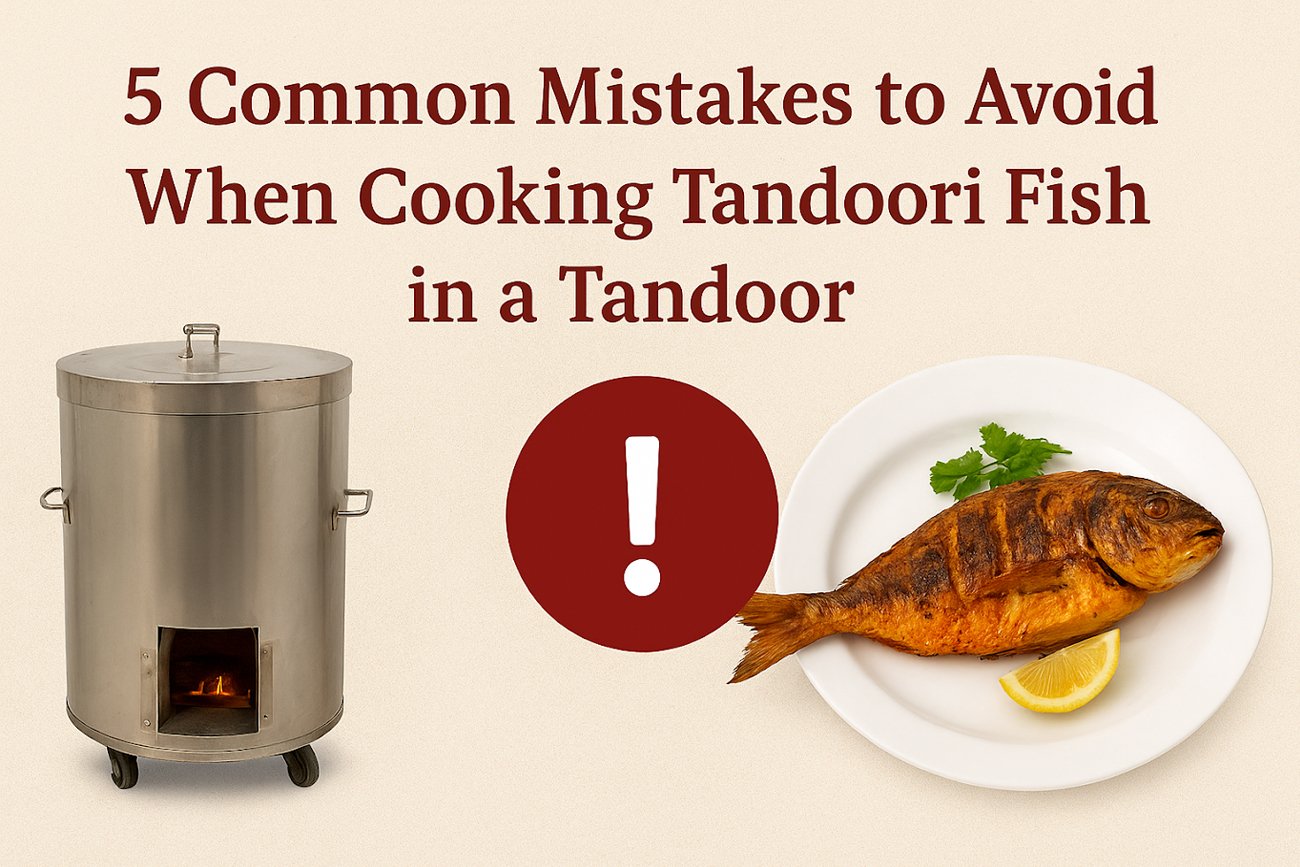
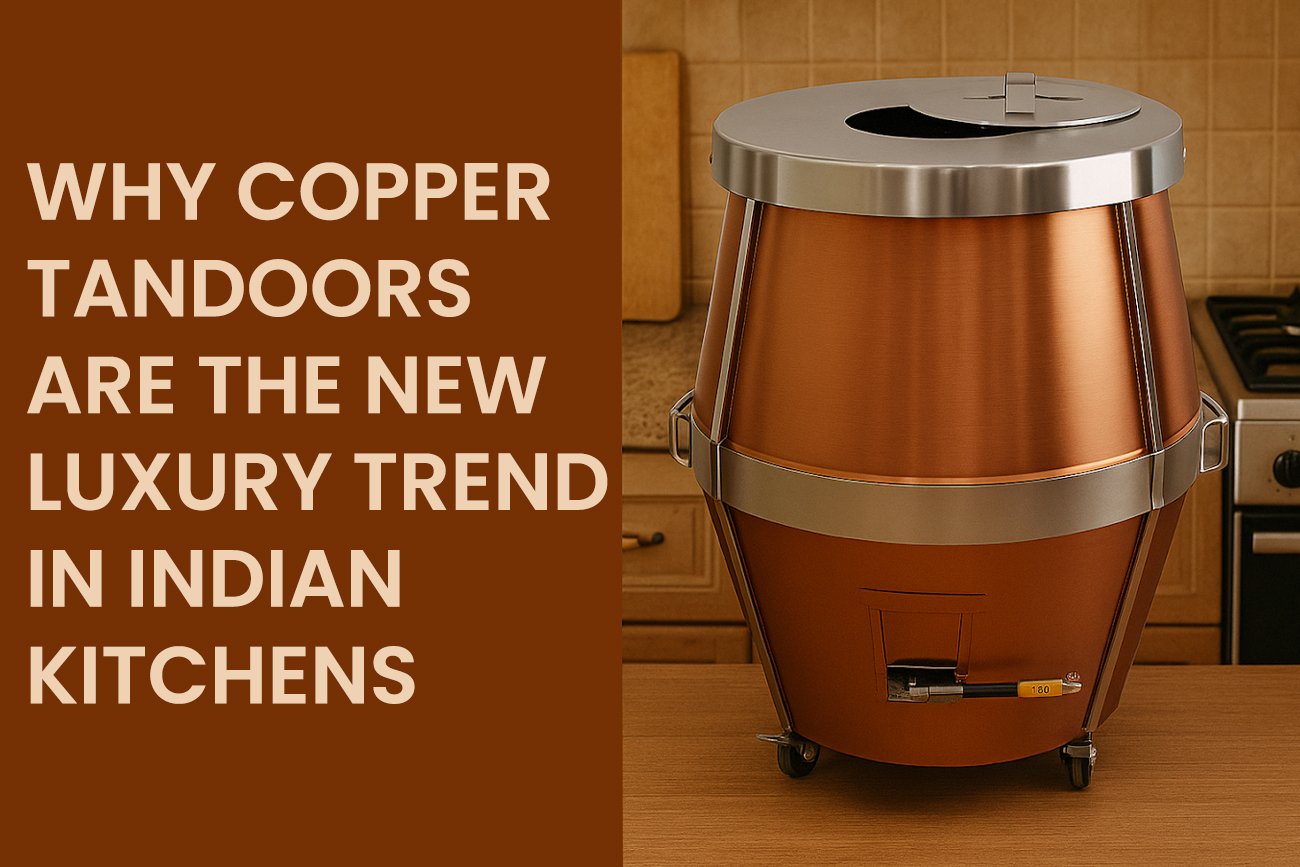

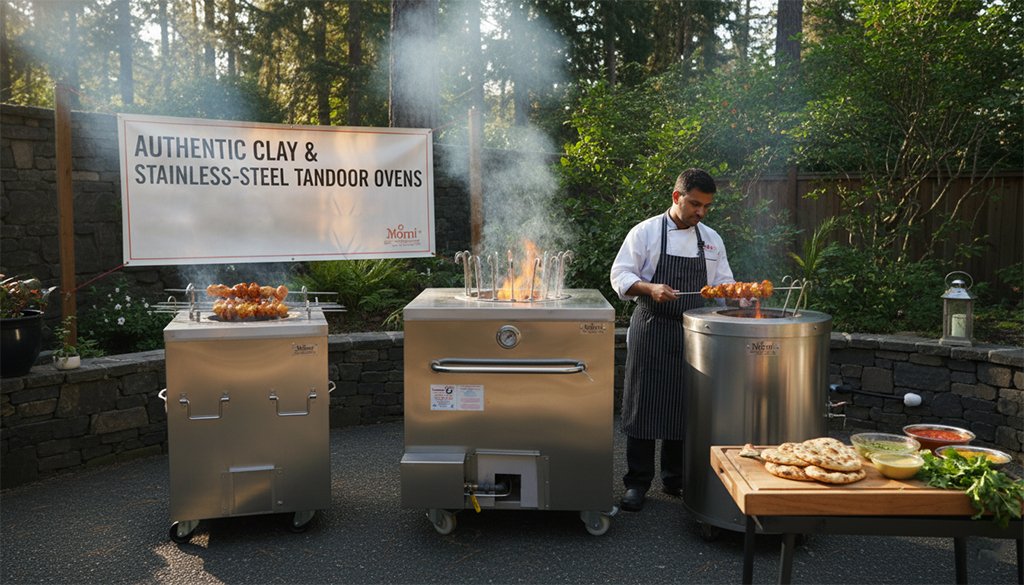
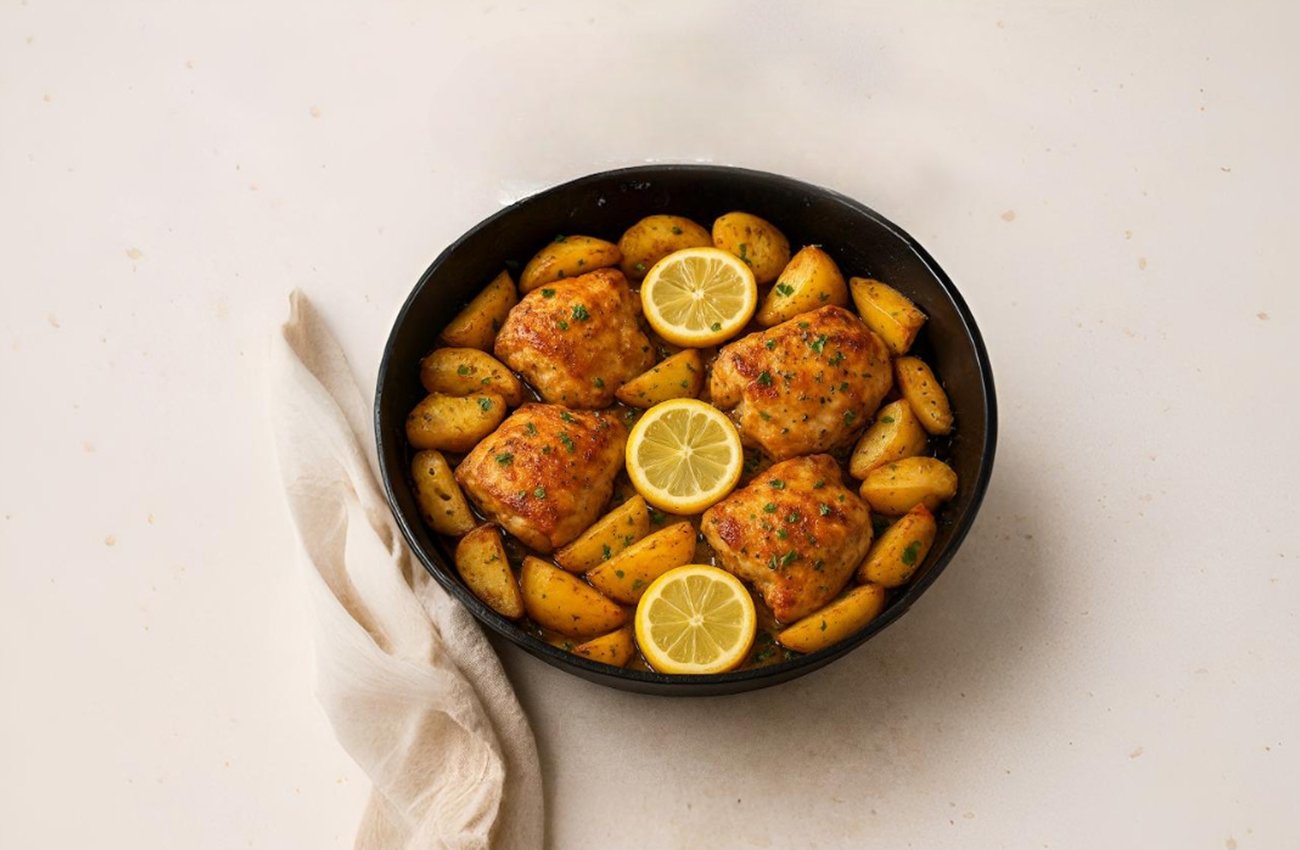
Leave a comment